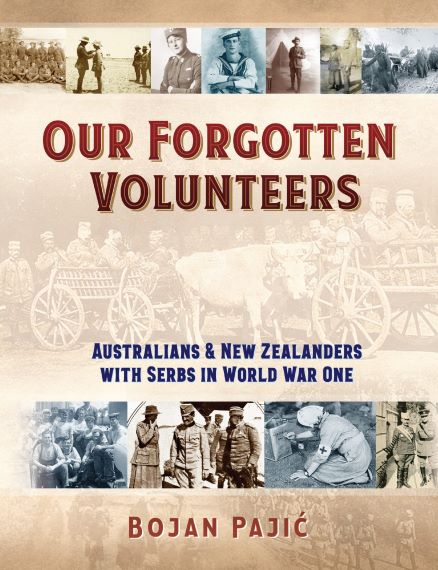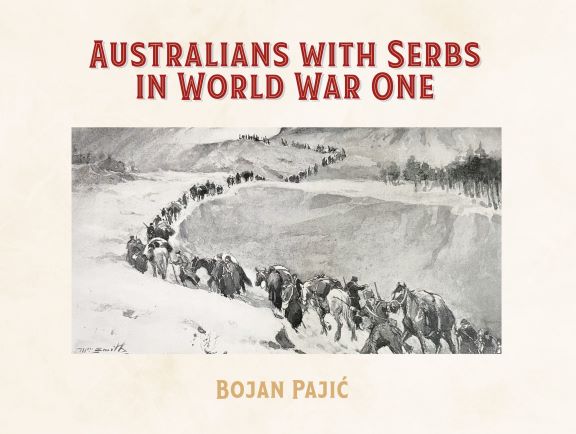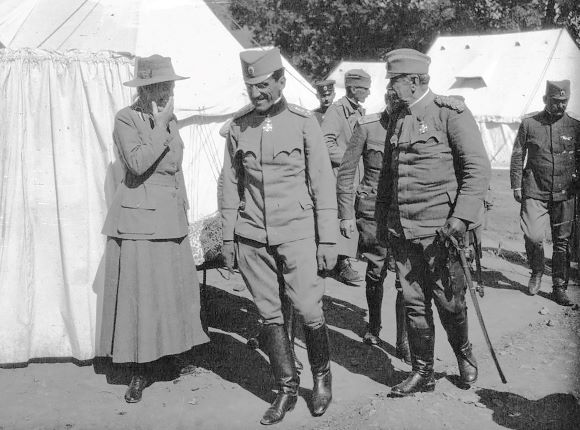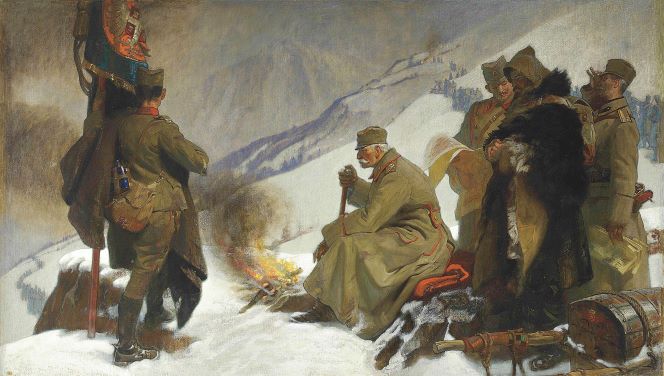The forgotten Serbian Campaign of the First World War
Reviewed by Professor John Pearn

It is easy to forget that the First World War began on 28 July 1914, when Austria-Hungary declared war on Serbia, sparking years of fierce fighting that exacted a brutal toll on Serbia’s civilian population. Australians were involved in the Allies’ campaigns to liberate Serbia from September 2015 and more than 380 nurses of the Australian Army Nursing Service served in the theatre from mid-1917.
Our Forgotten Volunteers is an enduring and engaging record of the service of the 1,500 Australian and New Zealand soldiers, airmen, sailors and medical and humanitarian volunteers who served in the Serbian campaigns. This work is a standard reference for those with an interest in Australian military history. It is also a standard reference for those with special interests in military medicine, the origins of gender equality in Australia, and the chronology of ethnic integration into both civilian and military life.
The research which underpinned this encyclopaedic work is professional and is staggeringly comprehensive. The chapters include details of the causes, development, actions and aftermath of the Serbian campaigns from 1914 until the final victory on the Macedonian, Salonika and Balkan Fronts in October 1918.
More than 150 Australian servicemen and women serving in operational frontline roles were decorated by the Serbian Government for their leadership, courage and exceptional voluntary service. For those with special interests in decorations and medals, this book is a must.
The book is also of particular note because of the unique and pioneering service of Australian women on operational service. In Australia, women doctors were forbidden to join the Australian Army Medical Corps until 1940; and then only with the Honorary rank of Captain.

In Our Forgotten Volunteers, Bojan Pajic documents the service of the Australian women surgeons, orderlies, ambulance drivers and nurses who served in forward operational units. Their legacy, documented so well in this book, is part of the history of Australian military medicine, no less important than that of the Anzac legend.
Australians with Serbs in World War One, is an annotated photo-archive of the Serbian campaigns from 1914 to 1918. This fine book features a collection of moving and dramatic photographs and paintings of peopleand places in those campaigns. It features the harrowing images of refugees in the first years of the war. It portrays the devastation of the Serbian typhus epidemic of 1914–15.
There are unique photographs of Australian women who served as medical orderlies, ambulance drivers and military doctors – all serving as volunteers who left their civilian lives in Australia so that tyranny might be fought and democracy preserved. Of the many individual stories, one of universal interest is that of Stella Miles Franklin, the pioneer woman Australian writer, and the details of her service as a cook and orderly in a forward Scottish Women’s Hospital Unit.

One of the terrible battles of the war was that of Kajmakcalan, in which the Serbs defeated the Bulgarians between 12 and 30 September 1916. Stella Miles Franklin wrote a play, By Far Kajmakcalan, which features her admiration for the humanity and courage of the Serbian soldiers.
These two books fill a gap in the contemporary knowledge and understanding of our national history. In one sense they are a memorial of the service and courage of more than a thousand Australians who served in those campaigns. In another, they are important reference works for those with interests in Australian history more broadly and our national military history specifically. I commend them.
Major General Professor John Pearn AO GCStJ RFD is a senior physician, professional historian and former Surgeon General of the ADF who served on operational deployments in Papua New Guinea, the Indonesian Confrontation, the Vietnam War and Rwanda. Both books are available from Australian Scholarly Publishing.


Images:
Australians with Serbs in World War One, by Bojan Pajic. Melbourne, Arcadia, 2022. 132 pages; $60.00.
Our Forgotten Volunteers, by Bojan Pajic. Melbourne, Arcadia, 2018. 491 pages; $65.00.
Stella Miles Franklin served as an orderly who treated wounded Serbian soldiers.
Australian Dr Agnes Bennett with Serbian Crown Prince Alesandar at the hospital she led supporting the Serbian Army.
King Peter of Serbia retreating across the Albanian Mountains 1915, by Frank O. Salisbury.
Sailors of RAN River Class destroyers which took part in operations in the Adriatic Sea during the Serbian Campaign